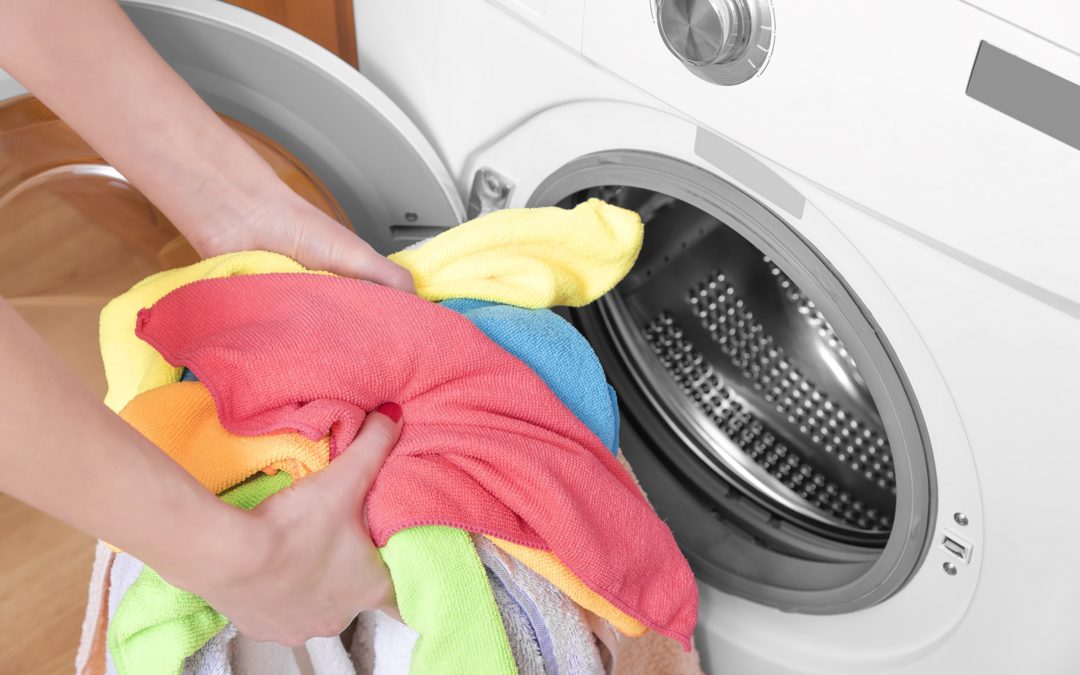Walton Gas’s hacks for saving time, energy when tackling dirty clothes
Doing the laundry may be the most dreaded of all weekly chores. Despite that, somebody thought we needed a day to celebrate dirty clothes. Yes, along with tax day, April 15 is National Laundry Day.
A clothes hamper full of dirty, stinky laundry is much like taxes and death: it’s inevitable. As soon as you get everything sorted, washed, dried, ironed, folded, hung up or put away, it’s time to do it all over again.
National Laundry Day reminds us there are smarter ways to accomplish this chore. To help you, um, celebrate, Walton Gas scoured the internet for hacks and tips that can save time and energy while easing your wash-and-dry routine.
WASH
- Mind the water temperature.
Not every load of laundry should be washed in hot or warm water. Use hot water for heavily soiled work clothes, linens and towels, bedding, socks, underwear or whites. Hot water is also recommended when washing up after a household illness. Otherwise, use cold water to extend the life of expensive clothes and also to lower your water heating costs.
- Keep socks paired in a mesh bag.
Clip a mesh bag to each family member’s laundry hamper to collect socks right when they come off. Then, just zip up and throw the bags into the washer and dryer. Clean socks can be paired and returned to their correct owner in no time.
- Use vinegar as softener substitute.
Out of your favorite liquid fabric softener? Add a half-cup of distilled white vinegar to the final rinse cycle as a softener alternative.
- Clean your washer.
Clean your washer once a month by mixing 1/4 cup vinegar with a quart of warm water. Use this mixture, plus a sponge and old toothbrush, to clean in the places where wash water doesn’t reach. Then, run an empty, regular cycle on hot, using two cups of vinegar instead of detergent. The hot water-vinegar combo removes and prevents bacteria growth.
DRY
- Switch to a natural gas dryer.
If you’re already using natural gas to heat the water for your clothes washer, then think about using a natural gas-fueled clothes dryer, too. Drying the laundry is easier and quicker with a natural gas dryer in the laundry room. Natural gas dryers heat up faster than electric models, so they dry your clothes faster. It’s estimated that the average family can save up to 48 hours of drying time a year when using a natural gas dryer. Doing the job faster also makes a gas dryer more energy efficient. High-efficiency natural gas dryers can save up to 50 percent in dryer energy costs, estimates the Consumer Energy Center.
• Bag line-dry items.
Avoid accidental drying of sweaters and other shrinkable items by placing them in a colored mesh bag for laundering. The bag is easy to spot when transferring wet clothes, reminding you not to toss it in the dryer.
- Make a note.
Use a dry-erase marker to make a list on the washer lid of items that should be lined dried rather than placed in the dryer. After, you can easily wipe away the list.
- Shake, shake, shake.
Shake out damp items as you move them from the washer to the dryer. Clothes dry faster and with fewer wrinkles.
- Add a towel.
Speed up the drying process by putting a medium-sized towel in the dryer with wet clothes. It will help absorb water.
- Throw in tennis balls.
Add some fluff to comforters, sheets and towels by throwing in a couple of new, unused tennis balls when you place wet items into the dryer. The movement of the balls adds volume and softness naturally.
- Try dryer balls.
If dryer sheets aren’t to your liking, check out wool dryer balls. They keep air moving, smoothing out wrinkles and speeding up your drying time.
- Reach for the foil.
Out of dryer sheets? Control static cling in the dryer by tossing in a couple of balls of aluminum foil. The balls discharge the static buildup, preventing your clothing from sticking together. Replace with new foil balls every 1-2 months.
- Clean the trap.
If your dryer filter isn’t clean, your dryer’s motor works slower. So, it takes longer for clothes to dry and uses more energy. Clogged dryer vents can also overheat your dryer, creating a fire hazard. In addition to removing lint from the screen between every load, periodically perform a thorough cleaning of the lint trap. Wrap a paint stick or ruler in an old dampened pillowcase and shove it down the vent area as far as it will go. Trapped lint will stick to the pillowcase, so it can be easily removed.
These tips and hacks might not lessen your laundry load, but they can speed the work while saving energy, too. Now, that is worth celebrating — on April 15 and every other day of the year.
